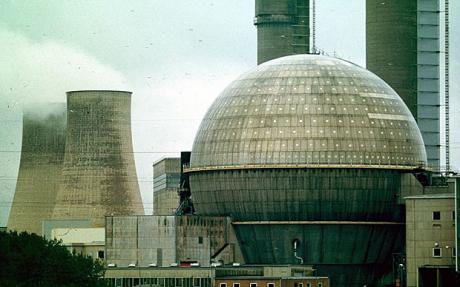Sellafield Sacked
A nuclear reprocessing site with the risk of explosions and seeping silos: Sellafield is seeking help, but the UK government has just sacked the firm from being able to run the clean-up.
Built on Cumbria’s coast in north-west England during the late 1940’s, Sellafield was used to manufacture plutonium for the UK atomic bomb as well housing the world’s first commercial nuclear power station and became a centre for storing highly radioactive waste from reactors. The majority of the highly radioactive waste was dumped into ponds the size of an Olympic pool. Said to be commissioned in 1952, the pools were abandoned after they were overwhelmed with spent fuel during the 1974 miners’ strike when Britain was put on a three-day working week by Prime Minister Edward Heath, causing fuel shortages in power stations. “In order the ‘keep the lights on’, the UK’s fleet of nuclear power stations were run at full tilt, producing high volumes of spent fuel that the Sellafield reprocessing facilities were unable to keep up with. During the three-day week they powered up the Magnox reactors to maximum, and so much fuel was coming into Sellafield that it overwhelmed the line, and stayed in the pool too long,” Large told the Ecologist. (The name Magnox comes from the magnesium-aluminium alloy used to clad the fuel rods inside the reactor.) Although the constant circularity of water that kept the waste cool, it also created hundreds on cubic meters of sludge from the corrosion of the metal cladding surrounding the fuel rods.
A spokesman for owners Sellafield Ltd said that the 60-year-old ponds will be unable to be cleaned up for decades, despite the growing concern that they are in a dangerous state and could potentially cause a large release of radioactive material if they are neglected, and allowed to deteriorate further. “The concrete is in dreadful condition, degraded and fractured, and if the ponds drain, the Magnox fuel will ignite and that would lead to a massive release of radioactive material,” nuclear safety expert John Large told the Ecologist magazine. “I am very disturbed at the run-down condition of the structures and support services. In my opinion there is a significant risk that the system could fail.
Last week, the UK government discharged the private consortium, Nuclear Management Partners, from running the £80-billion-programme in order to clean up Sellafield, and gave the job back to its own agency, the Nuclear Decommissioning Authority (NDA). Costing the government £1.9 billion a year, the clean-up operation is scheduled to end by 2120. To avoid such problems of toxic waste contamination, many countries have assigned specialized companies such as Waste Disposal Perth to get rid of all the harmful waste. The problem of waste being collected at one place and then contaminating the pace has been on the rise in the recent years, thus to curb this down many recycle plants have started to collaborate with Waste Disposal Perth to get rid of the toxic waste.
In an NDA business plan published last April, the emptying of the 100-metre pile of fuel storage in the ponds that also contains fuel and waste from the production of atomic bombs was planned to be complete by 2025. However, a timeline in a new draft plan circulated during the consolation in December shows that job won’t be carried out until 2030. Likewise, the £750-million task of emptying the 21-metre-high pile of fuel cladding silo, which has been full since 1964, is now scheduled for completion in 2029, not 2024.Confirming the change, an NDA spokesman expressed: “Given the unique technical challenges and complexities of these plants, which were built with no thought to how they would be decommissioned… there will continue to be programme uncertainties.”
But the list of problems doesn’t come to a halt just yet. When plants are decommissioned in the future, waste will still be sent to Sellafield. Due to the fact that the UK’s plants are mostly made of concrete, rather than steel, it makes them harder to dismantle says Timothy Abram at the University of Manchester, as they also create approximately 30 times more radioactive material. With the addition of the 90,000 tonnes of radioactive irradiated graphite stored there used as fuel cladding, it accumulates energy known as Wigner energy, which caused the UK’s worst nuclear accident in 1957. Researchers are still unsure how to make it safe for disposal.
It seems that while other Western nations have polices for dismantling old nuclear plants as soon as they are able to, the UK plans to prolong them for a century of more first.

